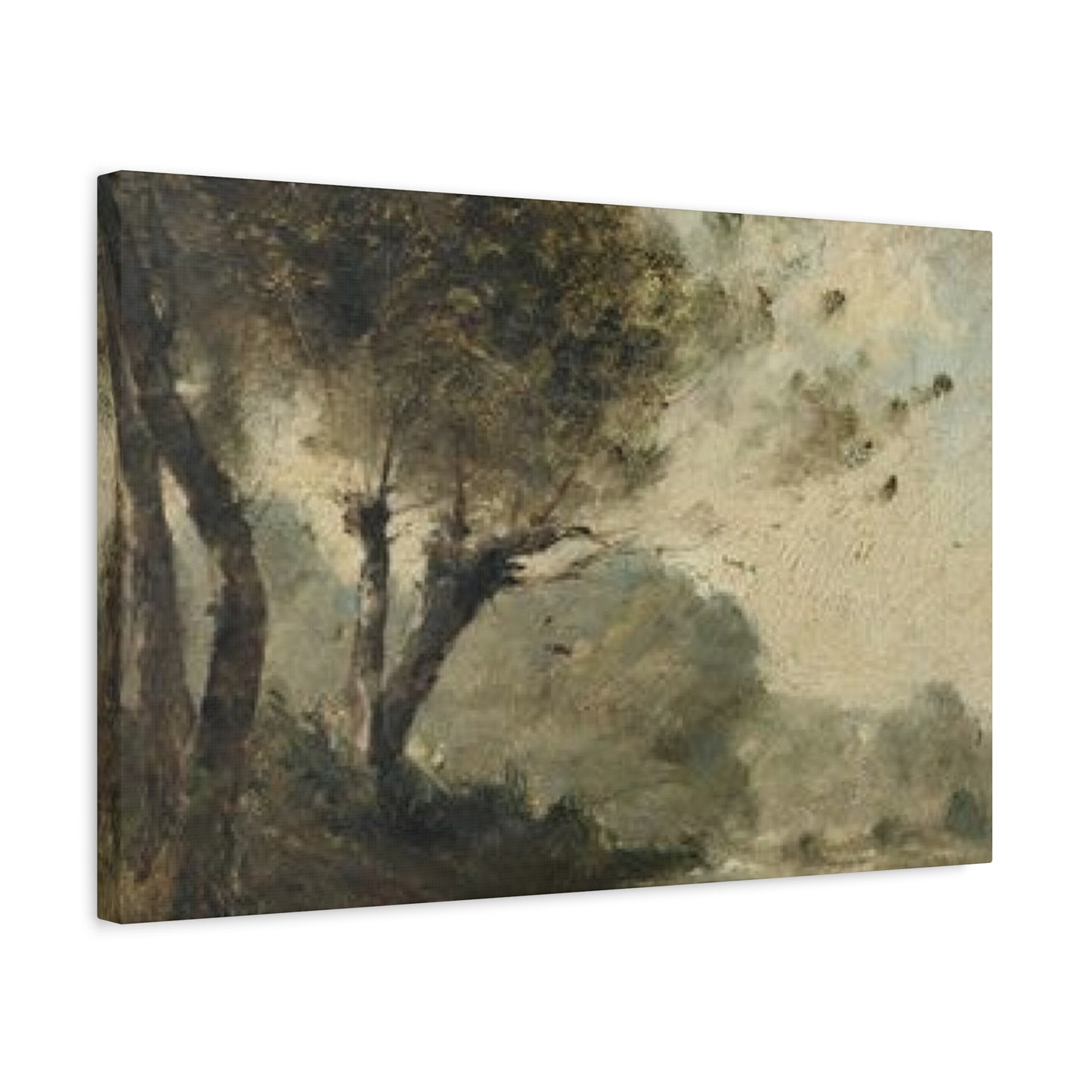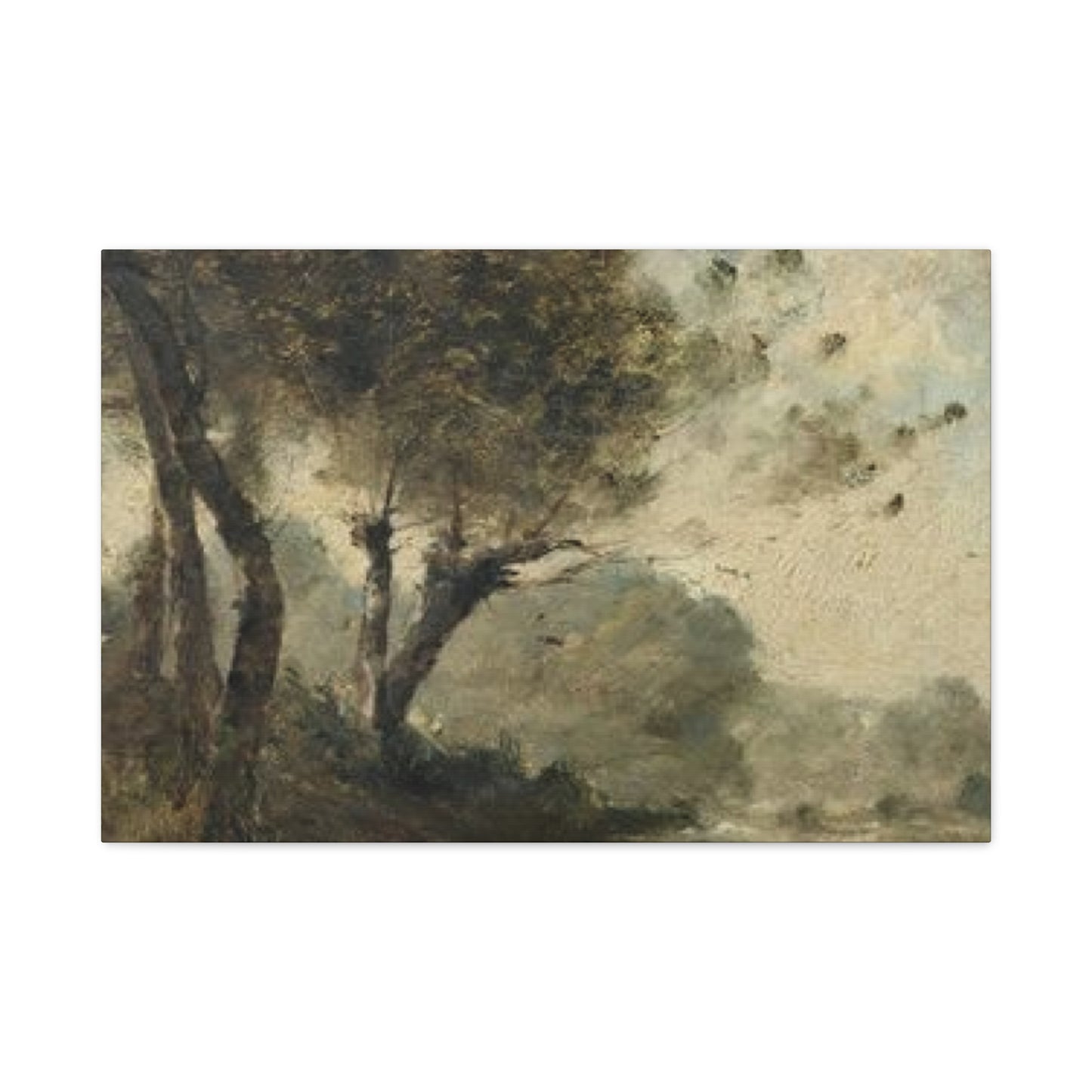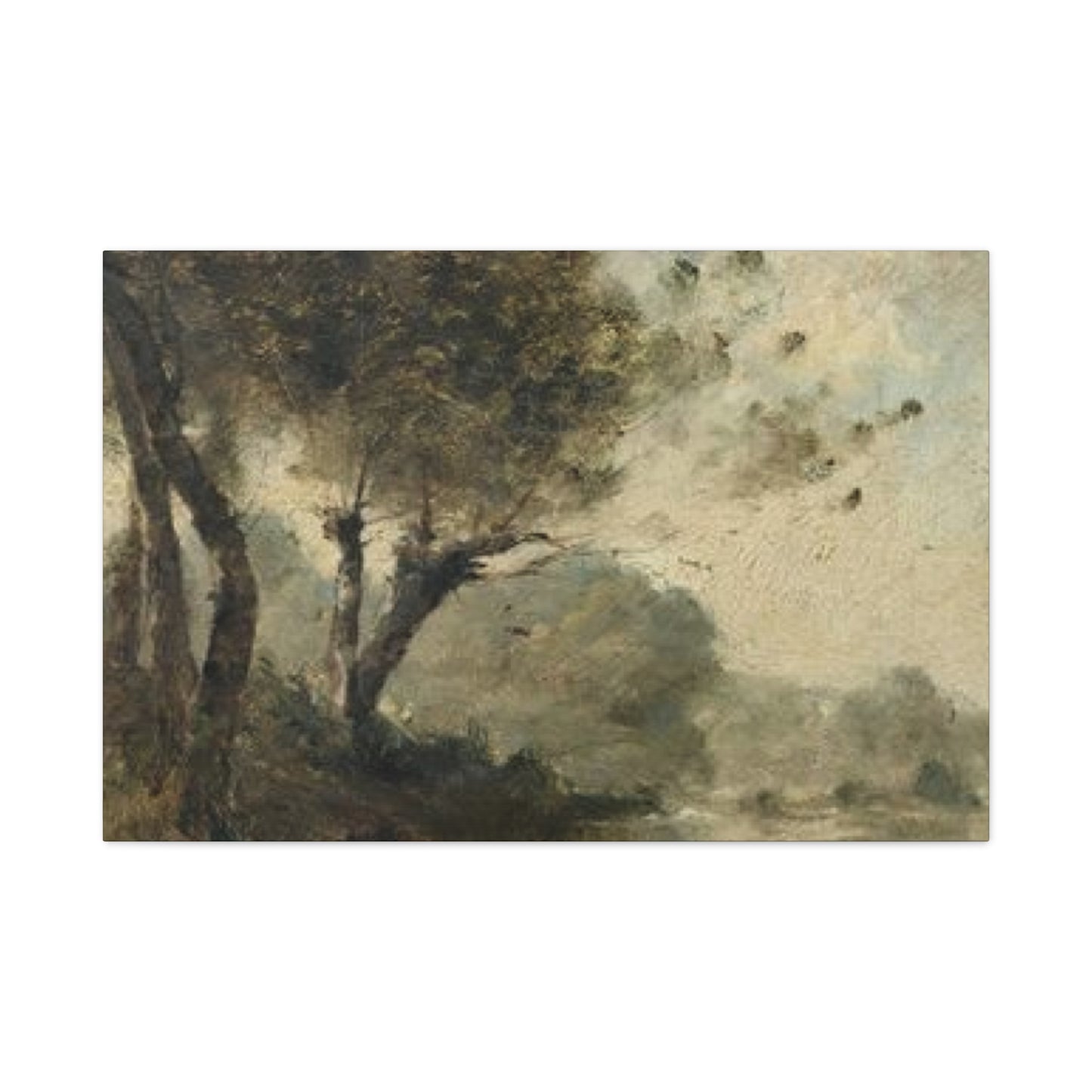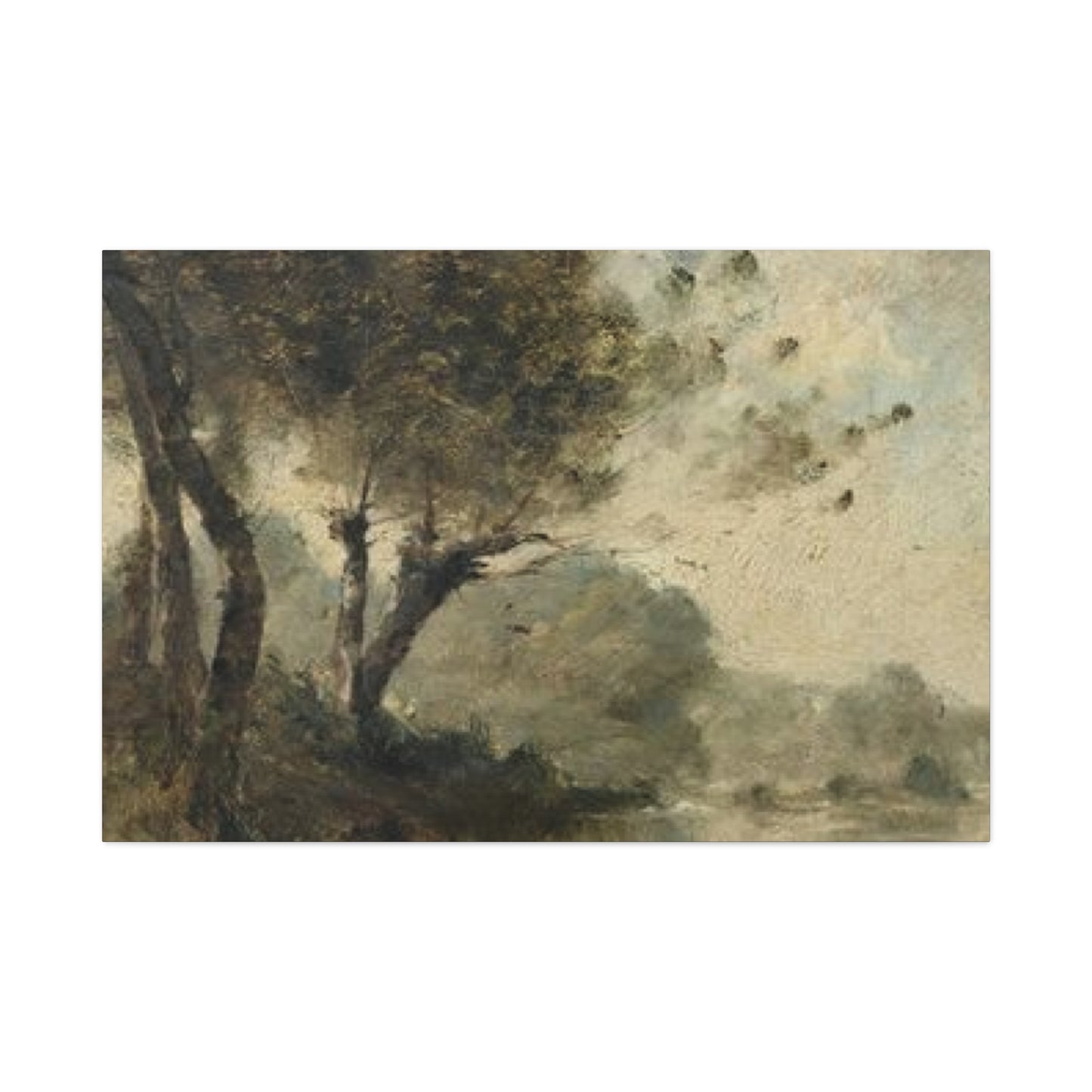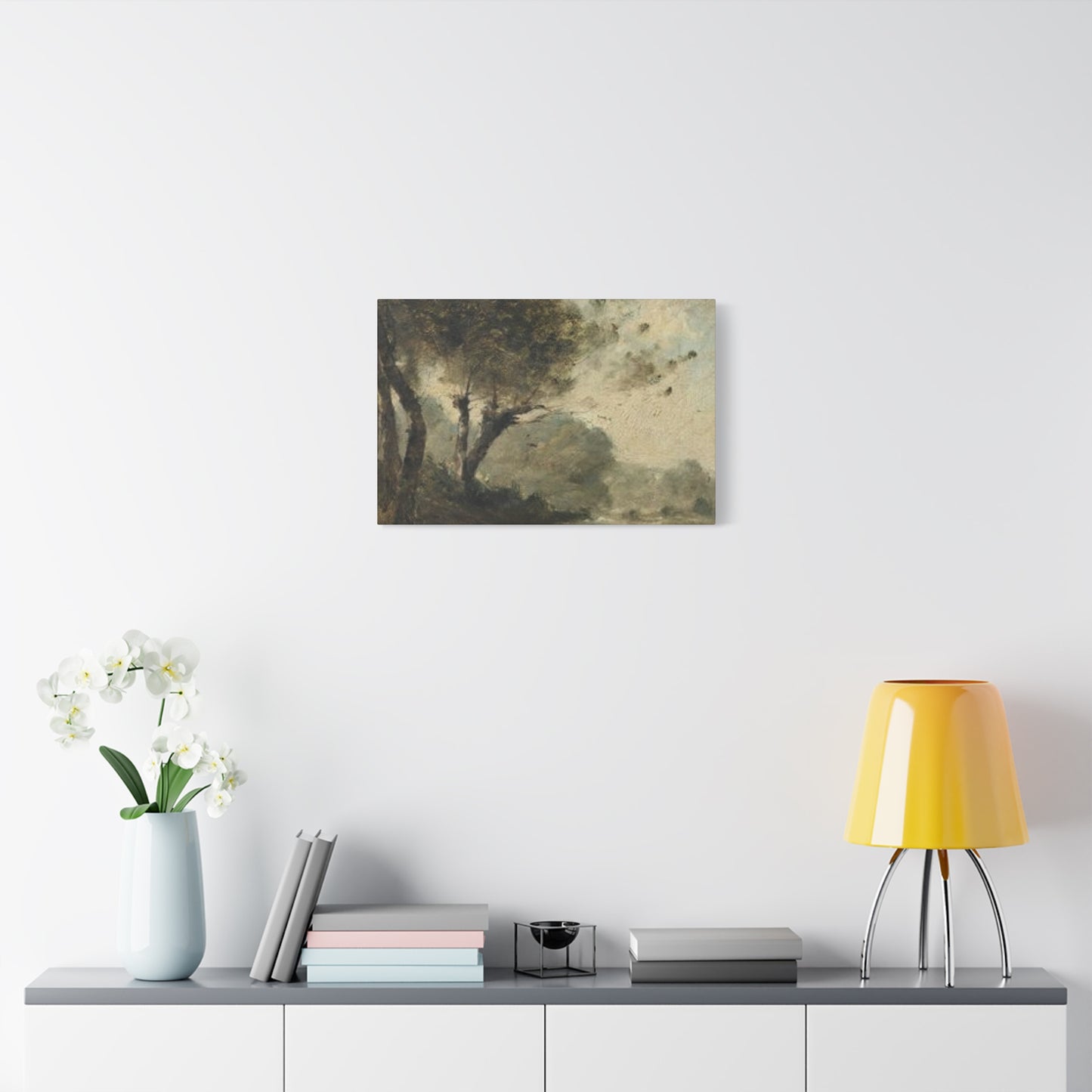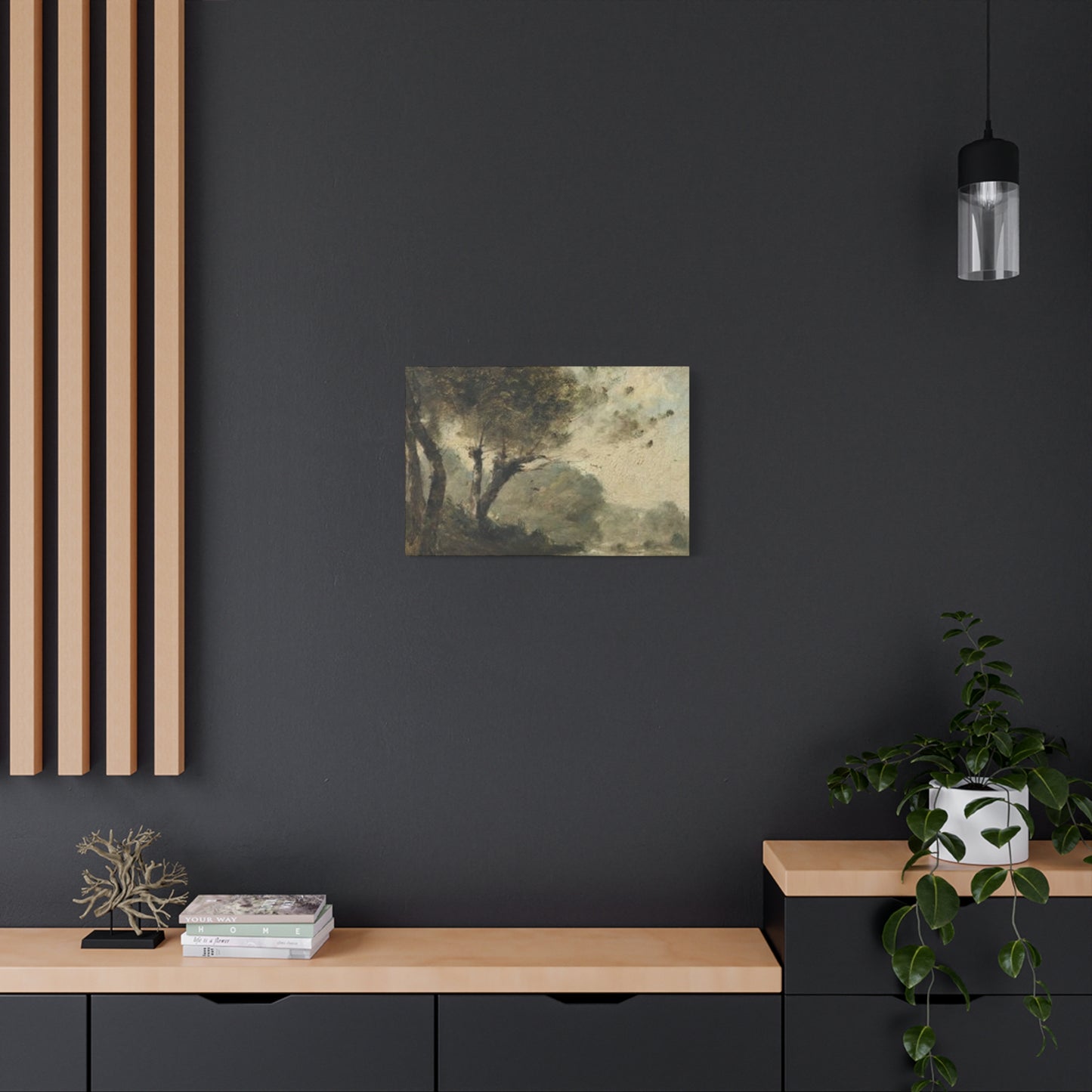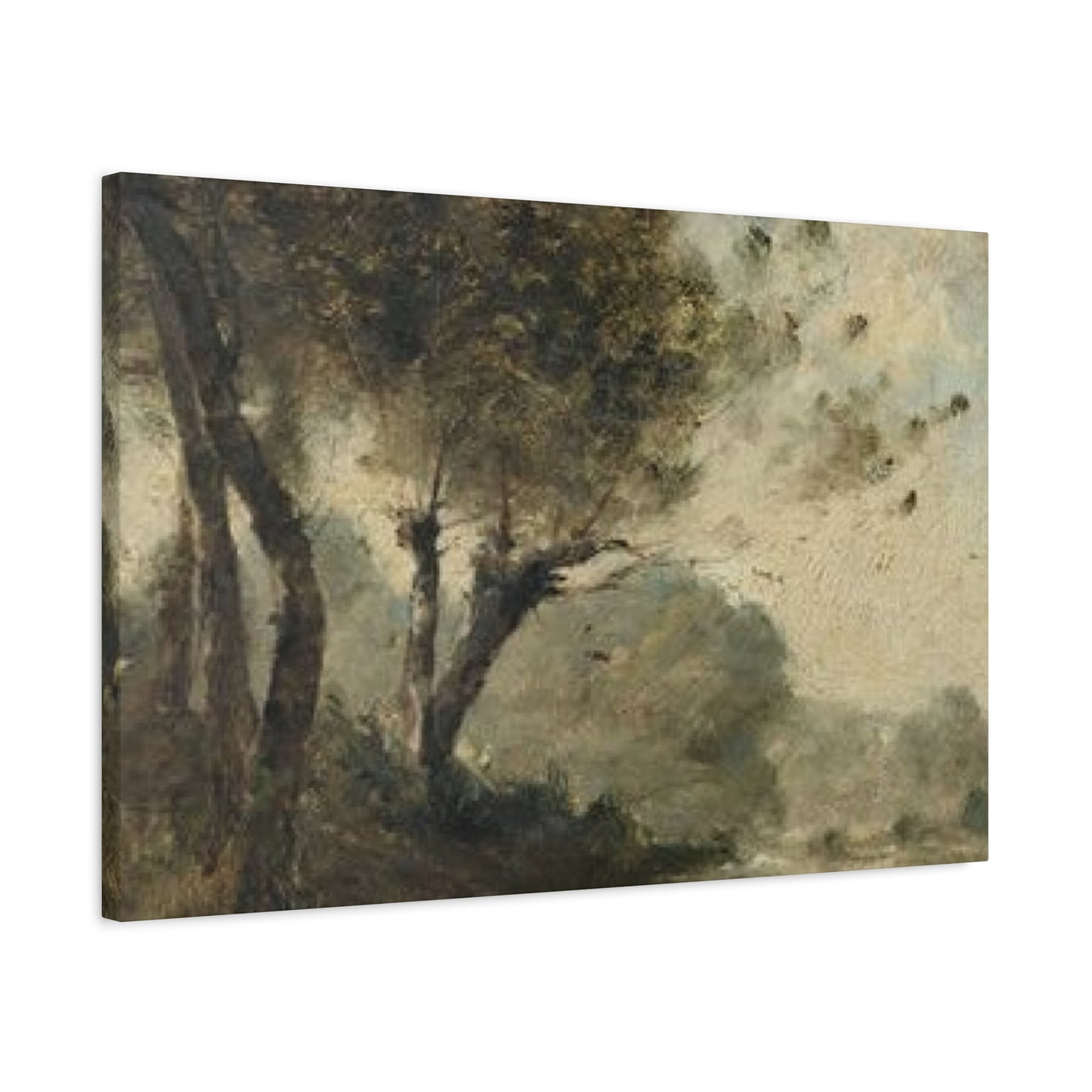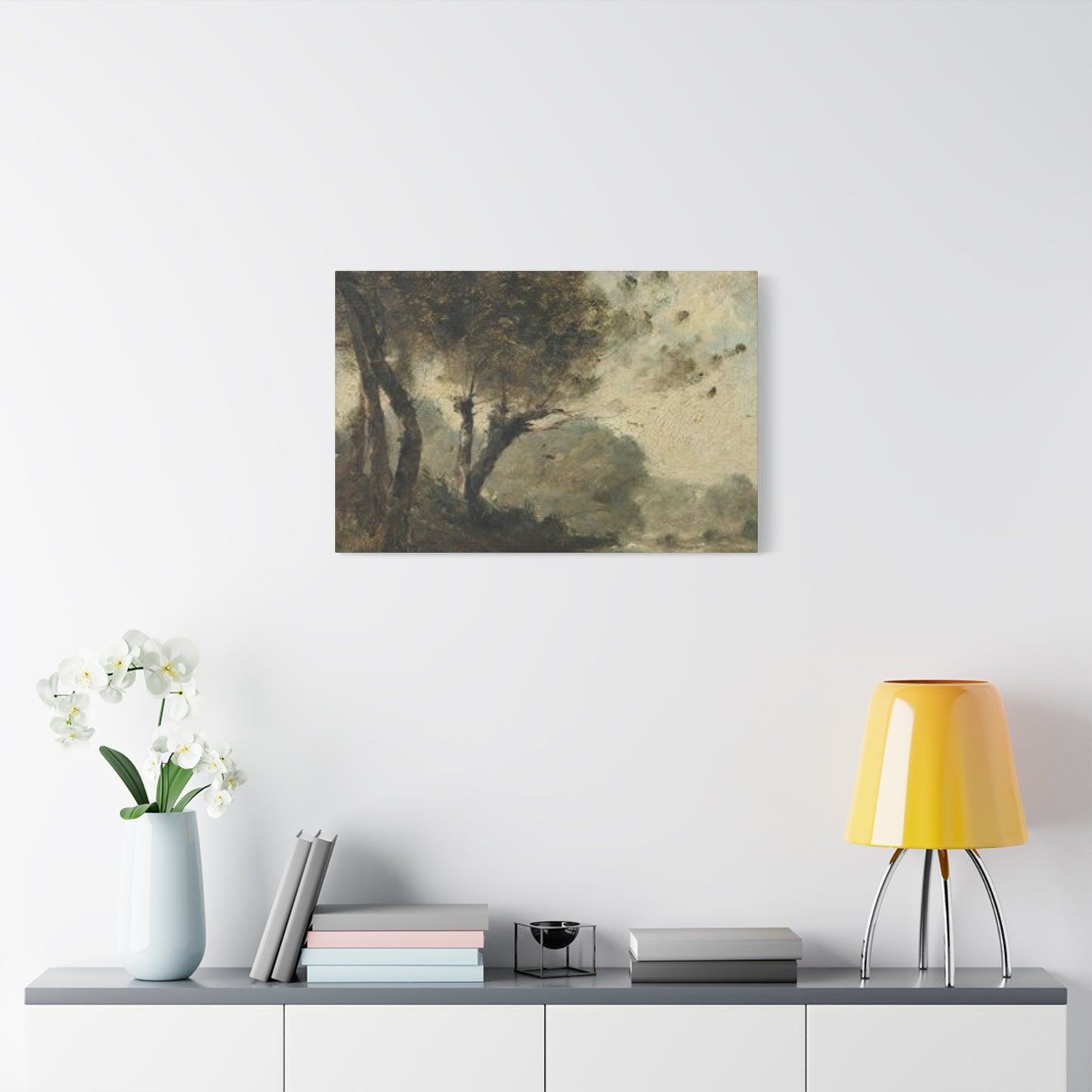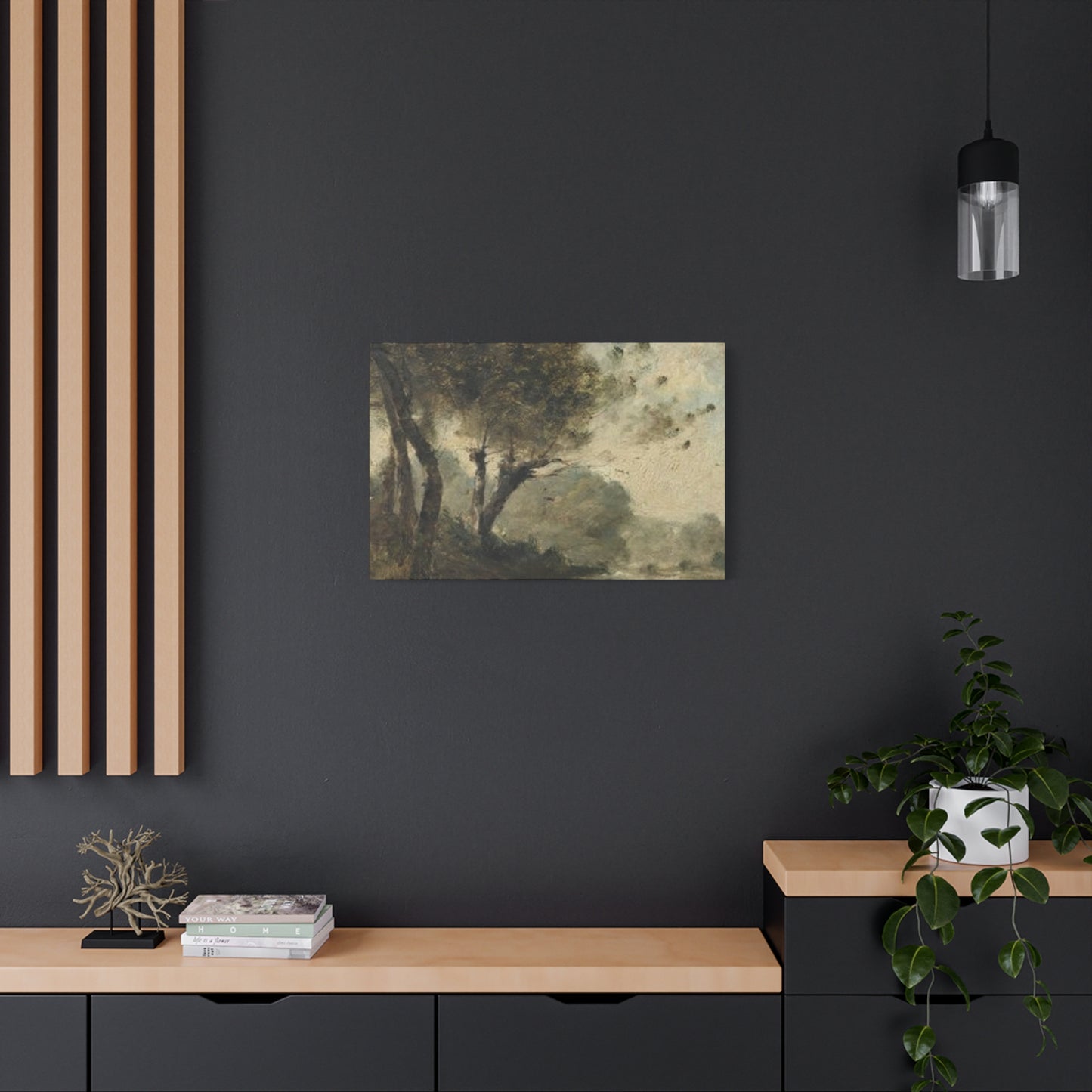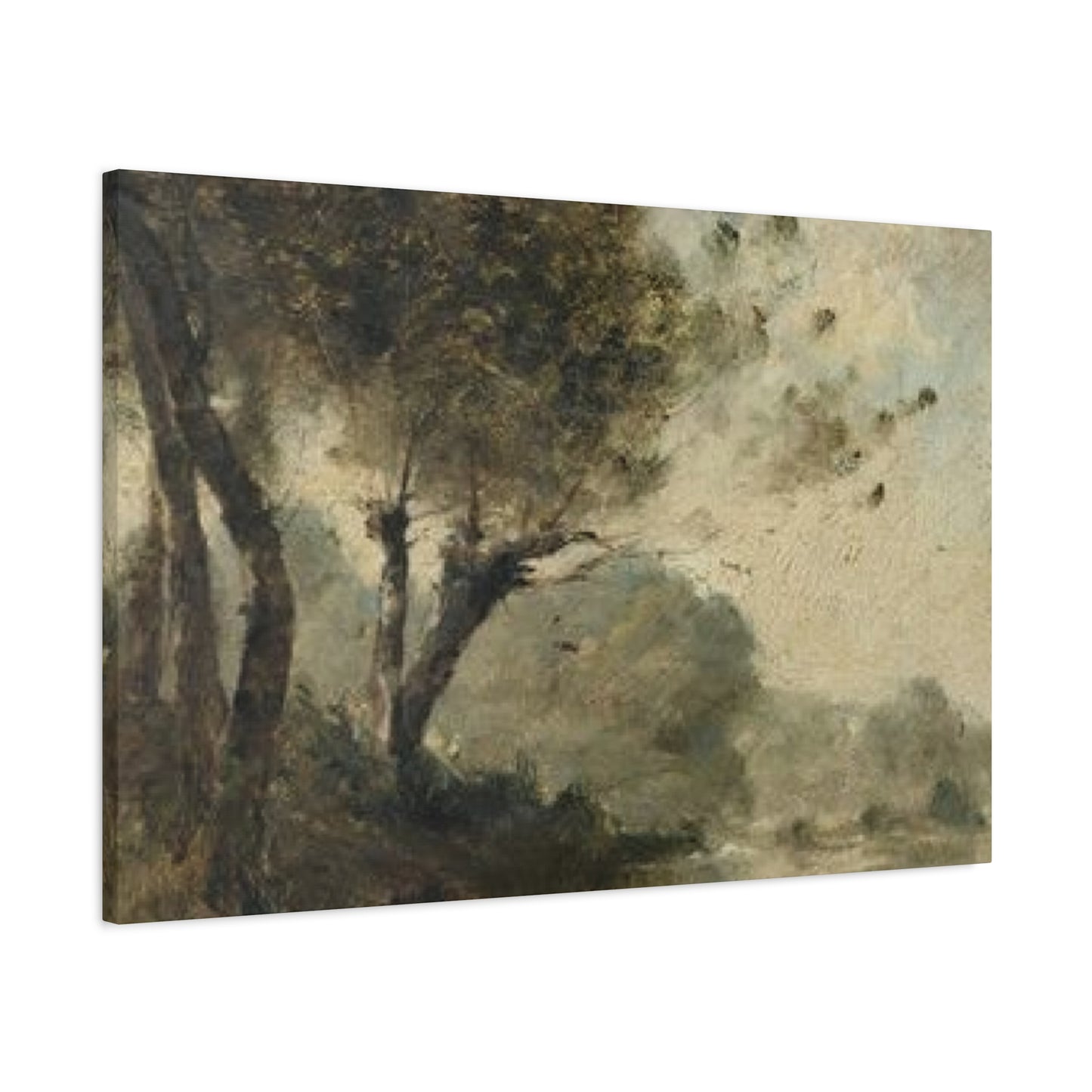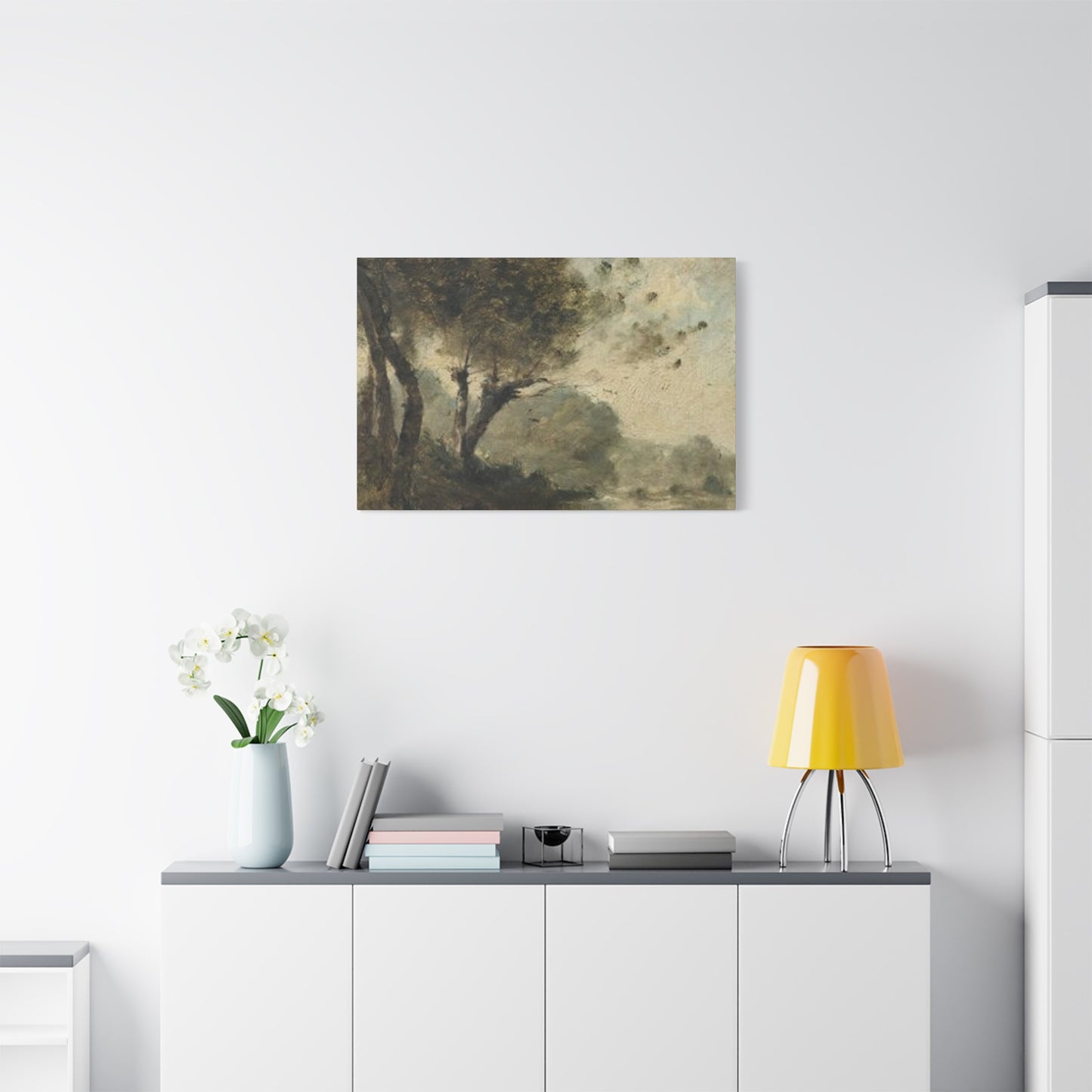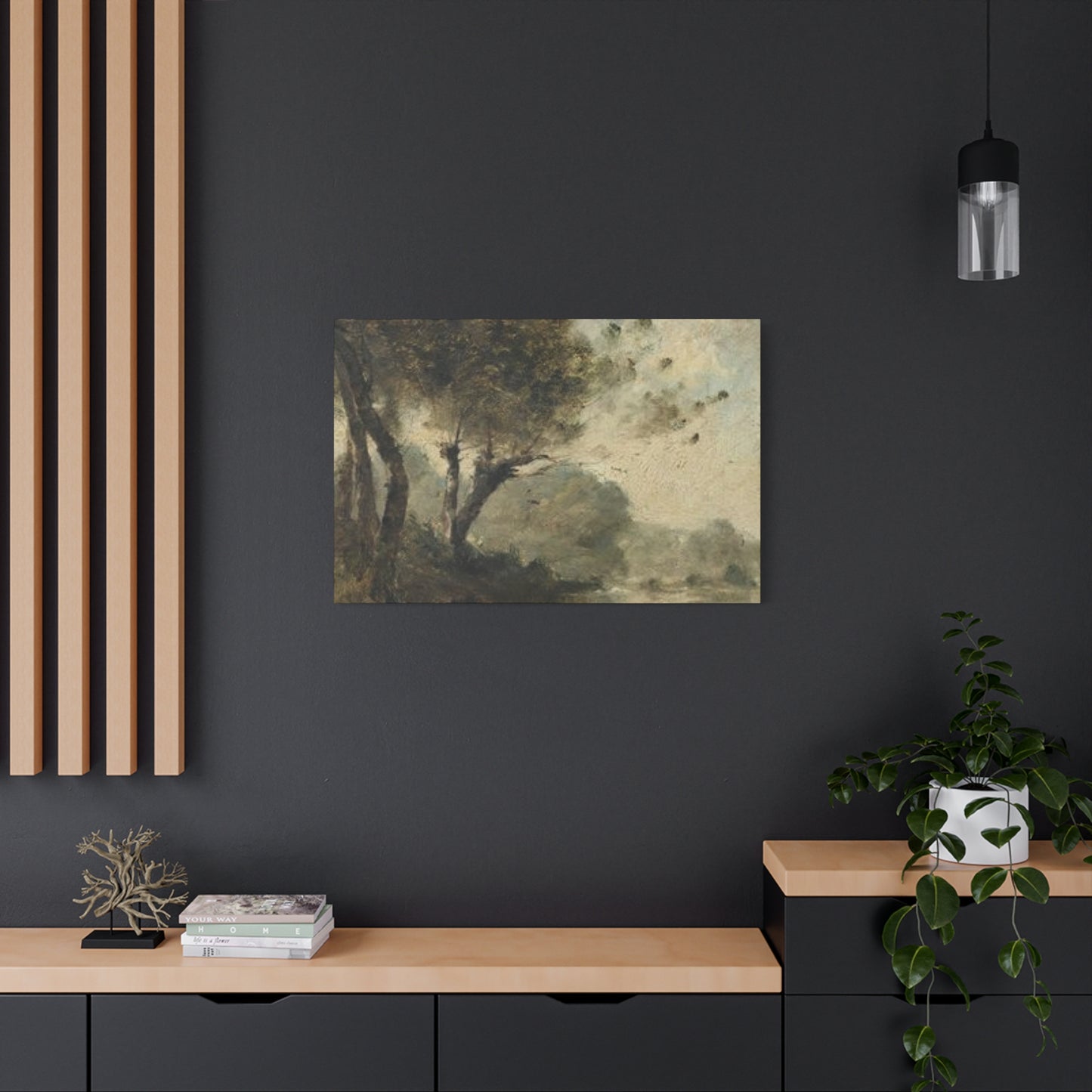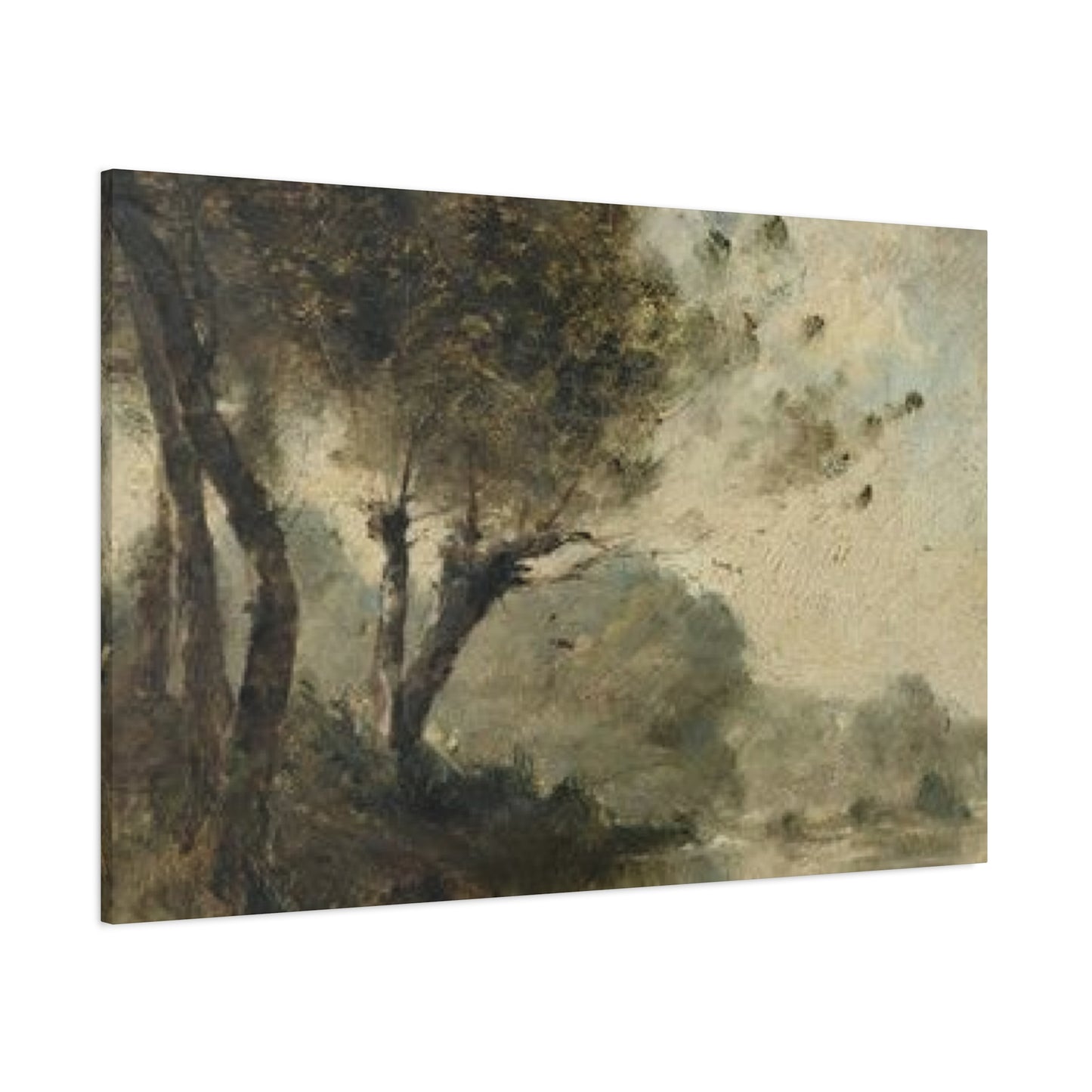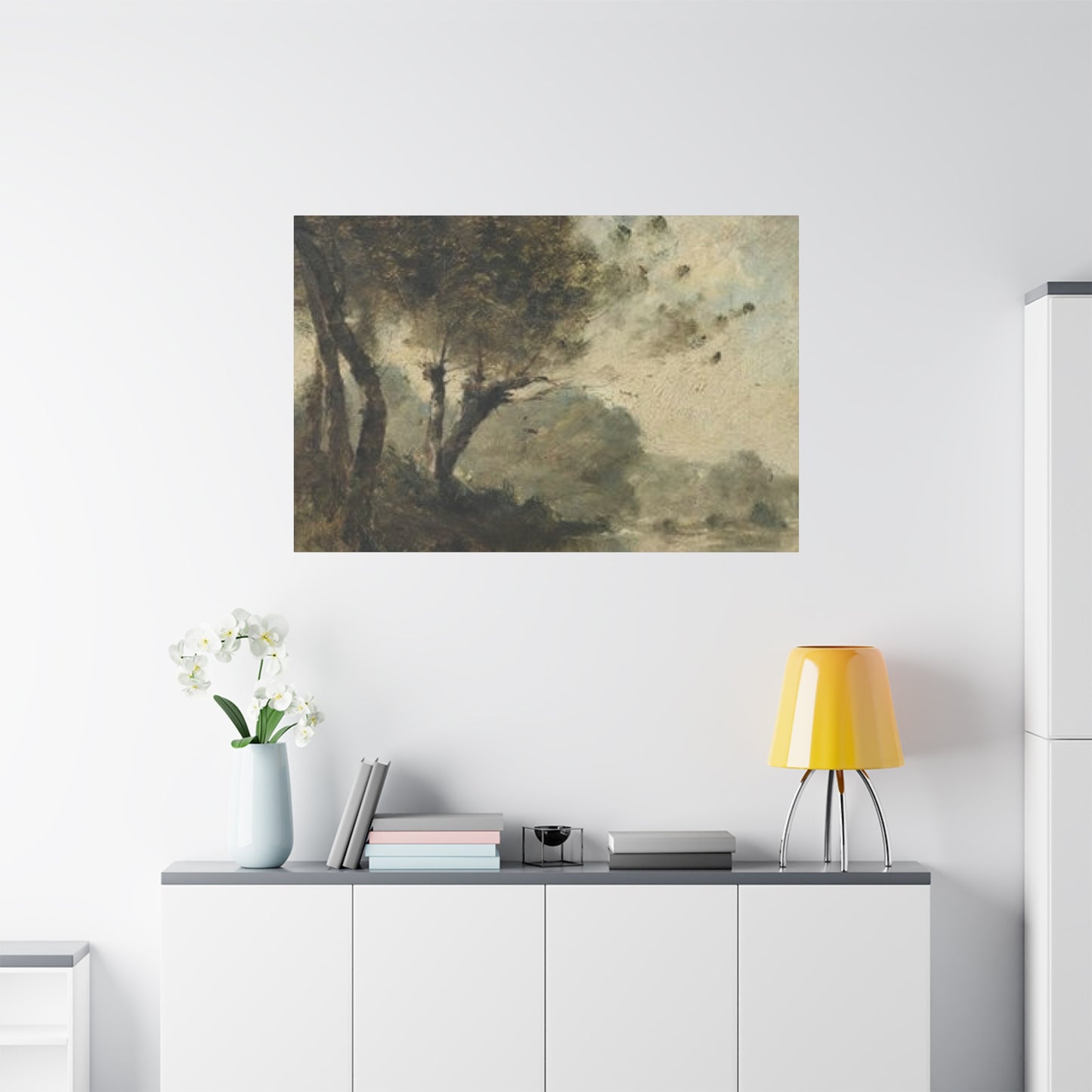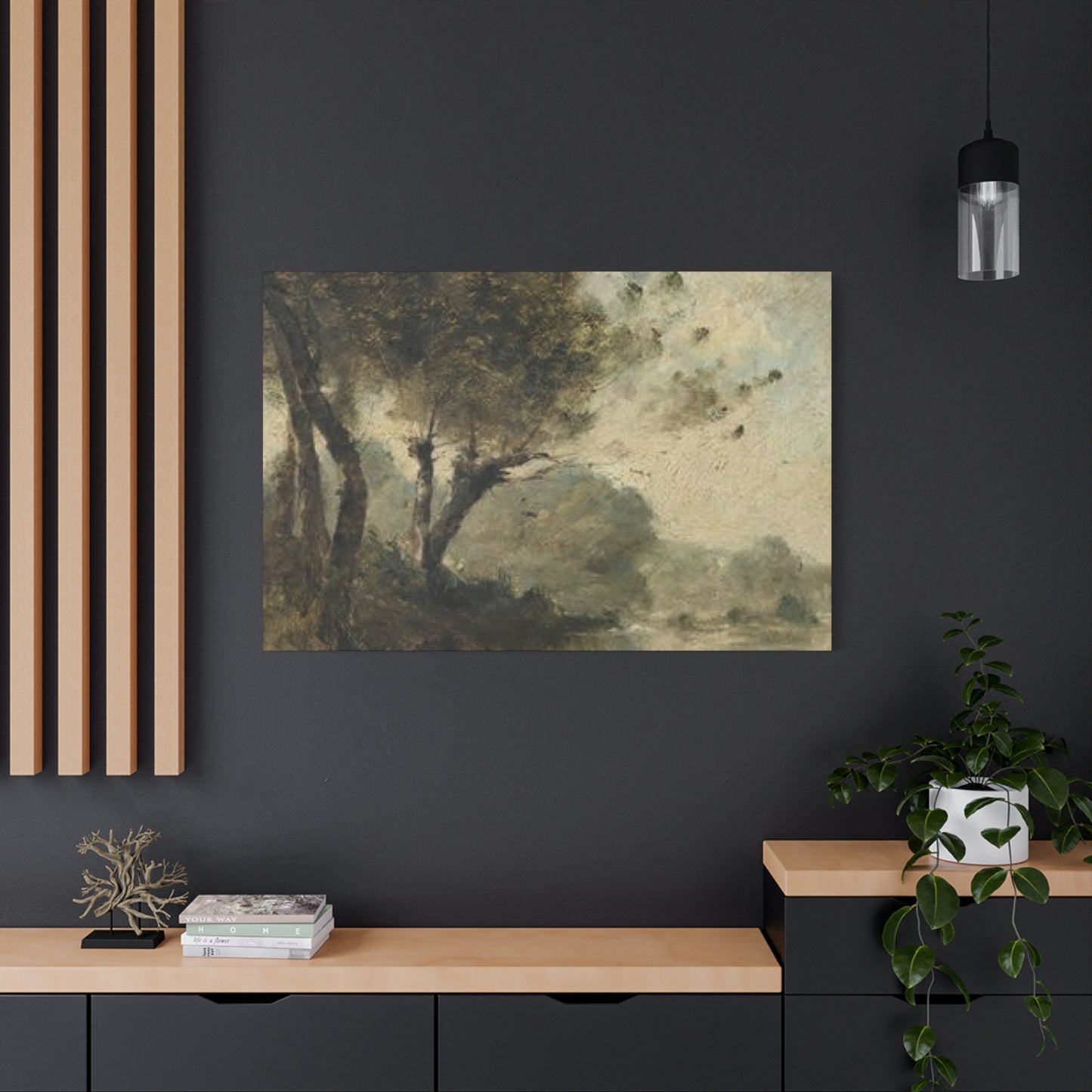Custom Fine Tree Wall Art: How to Commission Personalized Designs
The world of botanical artwork has experienced a remarkable renaissance in recent years, with tree-themed pieces becoming increasingly sought after by homeowners and decorating enthusiasts alike. These natural motifs bring an organic warmth and tranquil atmosphere to any environment, creating connections between indoor living and the great outdoors. Tree wall art represents more than mere decoration; it embodies a lifestyle choice that celebrates nature's enduring beauty while adding sophisticated visual interest to residential and commercial environments.
The appeal of arboreal artwork extends far beyond simple aesthetics. These pieces serve as powerful focal points that can transform ordinary rooms into extraordinary sanctuaries. Whether featuring delicate cherry blossoms, majestic oaks, or minimalist silhouettes, tree-themed artwork offers versatility that complements virtually any decorating style, from contemporary minimalism to rustic farmhouse charm.
Fine Tree Art for Living Room Walls
Living rooms serve as the heart of most homes, functioning as gathering areas where families come together and guests are entertained. The selection of appropriate tree wall art for these central areas requires careful consideration of multiple factors, including room dimensions, existing color schemes, furniture arrangements, and the overall ambiance desired.
Premium tree artwork designed specifically for living areas typically features larger formats that command attention without overwhelming the surroundings. These pieces often incorporate rich color palettes that complement existing furnishings while adding depth and visual interest. Contemporary tree art might showcase bold, graphic interpretations of forest scenes, while traditional preferences lean toward realistic depictions of beloved species like weeping willows or flowering dogwoods.
The positioning of fine tree artwork within living areas deserves special attention. Hanging pieces at appropriate heights ensures optimal viewing angles for both seated and standing guests. Generally, artwork should be positioned so that its center point aligns with average eye level, approximately 57 to 60 inches from the floor. However, in rooms with particularly high ceilings, slight adjustments may be necessary to maintain proper proportional relationships.
Scale considerations play crucial roles in successful tree art placement. Oversized pieces work exceptionally well above large furniture arrangements such as sectional sofas or entertainment centers, while smaller works might be grouped together to create compelling compositions. The relationship between artwork size and wall dimensions should feel balanced, with pieces neither disappearing into vast expanses nor dominating smaller areas.
Lighting significantly impacts how tree wall art appears within living environments. Natural light from windows can enhance the colors and details of botanical artwork throughout the day, creating dynamic visual experiences that change with the sun's movement. Artificial lighting options, including track lighting, picture lights, or strategically placed table lamps, can highlight specific pieces during evening hours while creating warm, inviting atmospheres.
The psychological benefits of incorporating tree imagery into living areas cannot be overlooked. Research suggests that exposure to natural elements, even through artistic representations, can reduce stress levels and promote feelings of calm and well-being. Tree wall art serves as a constant reminder of nature's beauty, providing visual respite from the demands of modern life.
Material choices for fine tree artwork in living rooms range from traditional canvas paintings to contemporary metal sculptures and everything in between. Each medium offers unique advantages and aesthetic qualities that appeal to different preferences and decorating styles. Oil paintings provide rich textures and depth, while watercolors offer delicate, ethereal qualities. Photography captures realistic details of actual trees, and digital art allows for creative interpretations impossible through traditional media.
When selecting tree wall art for living areas, consideration should be given to the room's existing color palette and decorating theme. Neutral-toned pieces work well in minimalist or Scandinavian-inspired environments, while bold, colorful interpretations complement more eclectic or bohemian styles. The key lies in achieving harmony between the artwork and its surroundings while allowing each element to contribute to the overall aesthetic vision.
Tree Silhouettes in Wall Decor
The art of silhouette creation has ancient roots, dating back thousands of years to shadow play traditions found in various cultures worldwide. In contemporary wall decor, tree silhouettes represent a sophisticated approach to botanical artwork that emphasizes form and structure over intricate details. These minimalist interpretations of arboreal beauty offer timeless elegance that transcends seasonal trends and decorating fads.
Tree silhouettes possess unique visual properties that make them exceptionally versatile for various decorating applications. Their simplified forms create strong graphic elements that work equally well in modern and traditional settings. The absence of color detail allows these pieces to integrate seamlessly with existing color schemes while providing striking contrast against both light and dark backgrounds.
The creation of effective tree silhouettes requires careful attention to recognizable characteristics that make different species identifiable even without detailed features. Oak trees, for instance, are distinguished by their broad, spreading canopies and sturdy trunks, while pine trees display characteristic triangular shapes with upward-reaching branches. Cherry trees might show delicate, drooping branches, and palm trees exhibit their distinctive frond patterns.
Contemporary artists working in the silhouette medium employ various techniques to create compelling tree imagery. Traditional cut-paper methods produce crisp, clean lines with sharp contrasts, while painted silhouettes may incorporate subtle gradations and texture variations. Digital techniques allow for precise control over shapes and proportions while enabling easy reproduction and scaling for different applications.
The application of tree silhouettes in wall decor extends beyond simple framed pieces. These designs translate beautifully into vinyl wall decals, allowing for large-scale applications directly on painted surfaces. Metal cutout silhouettes create dramatic dimensional effects, particularly when backlit or positioned to cast interesting shadows. Wood-cut silhouettes offer warm, natural textures that complement rustic or craftsman-style environments.
Size variations in tree silhouette artwork provide opportunities for creative composition arrangements. Large, single silhouettes can serve as dramatic focal points, while collections of smaller pieces in various sizes create forest-like groupings that suggest depth and movement. The interplay between different tree shapes and sizes adds visual rhythm and interest to wall compositions.
Color considerations for tree silhouettes typically involve high contrast relationships that maximize visual impact. Black silhouettes against white or light-colored backgrounds create classic, timeless appearances, while white silhouettes on dark surfaces offer more contemporary, sophisticated looks. Colored silhouettes in deep blues, greens, or browns can provide subtle natural references while maintaining the simplified aesthetic appeal.
Placement strategies for tree silhouette artwork depend largely on the desired visual impact and room characteristics. Single large silhouettes work well as statement pieces above beds, sofas, or dining tables, while groupings of multiple pieces can fill larger wall areas or create visual flow through connected rooms. Corner placements can help define seating areas or create intimate conversation nooks.
The psychological appeal of tree silhouettes relates to their ability to suggest natural environments without overwhelming detail. These simplified representations allow viewers to project their own memories and associations onto the imagery, creating personal connections that enhance emotional responses to the artwork. The clean, uncluttered aesthetic also supports meditative and calming mental states.
Seasonal adaptability represents another advantage of tree silhouette wall decor. Unlike detailed botanical artwork that might clearly represent specific seasons, silhouettes maintain year-round relevance and appeal. However, they can be enhanced with seasonal accessories or lighting effects to create temporary themed displays when desired.
Abstract vs. Realistic Tree Art
The ongoing dialogue between abstract and realistic approaches to tree artwork reflects broader conversations within the art world about representation, interpretation, and viewer engagement. Both styles offer distinct advantages and appeal to different aesthetic preferences, making the choice between them largely dependent on individual taste and decorating objectives.
Realistic tree art prioritizes accurate representation of natural forms, colors, and details. These works often showcase the artist's technical skill in capturing the intricate textures of bark, the delicate patterns of leaves, and the subtle color variations found in natural settings. Photorealistic paintings and high-quality nature photography exemplify this approach, offering viewers the opportunity to appreciate natural beauty in controlled indoor environments.
The appeal of realistic tree artwork lies in its immediate recognizability and connection to shared natural experiences. Viewers can identify specific species, seasons, or even geographic locations depicted in these works, creating personal associations and memories. Realistic pieces often serve as windows to natural environments, particularly valuable for urban dwellers with limited access to forests or woodlands.
Technical considerations for realistic tree art include attention to botanical accuracy, proper proportions, and convincing light effects. Artists working in this style must possess strong observational skills and technical proficiency in their chosen medium. The resulting works often demonstrate impressive craftsmanship that appeals to viewers who appreciate artistic skill and attention to detail.
Abstract tree art, in contrast, prioritizes emotional expression and conceptual interpretation over literal representation. These works might reduce tree forms to basic geometric shapes, explore color relationships inspired by natural phenomena, or deconstruct arboreal elements into non-representational compositions. Abstract approaches allow for greater artistic freedom and viewer interpretation.
The benefits of abstract tree artwork include its ability to complement various decorating styles without conflicting with specific natural references. These pieces can serve as color sources or textural elements while maintaining botanical inspiration. Abstract works also encourage viewers to engage more actively with the artwork, bringing their own interpretations and emotional responses to the viewing experience.
Contemporary abstract tree art often incorporates mixed media approaches, combining traditional painting techniques with collage, texture applications, or digital elements. These hybrid approaches can create rich, layered compositions that reward close examination while maintaining strong visual impact from a distance. The experimental nature of abstract work often results in unique pieces that serve as conversation starters.
Color usage differs significantly between realistic and abstract approaches to tree artwork. Realistic pieces typically employ natural color palettes that accurately represent seasonal changes, lighting conditions, and species characteristics. Abstract works might use color symbolically or emotionally, with purple trees or golden forests that prioritize aesthetic impact over natural accuracy.
Scale considerations vary between realistic and abstract tree art applications. Realistic pieces often work best when sized appropriately to suggest believable natural proportions, while abstract works can be scaled dramatically larger or smaller without losing their essential character. This flexibility makes abstract pieces particularly suitable for challenging architectural situations or unusual wall dimensions.
The longevity of appeal differs between these approaches as well. Realistic tree art tends to maintain consistent relevance over time, as natural beauty remains universally appreciated. Abstract pieces might be more susceptible to changing artistic trends, but exceptional works transcend temporary fashions to achieve lasting aesthetic value.
Mixing realistic and abstract tree artwork within single rooms or throughout homes can create dynamic, layered decorating schemes that offer visual variety and sustained interest. The key to successful combination lies in maintaining consistent quality levels and finding common elements such as color relationships or complementary scales that unify the different approaches.
Framing Tips for Fine Tree Wall Art
The selection and application of appropriate framing techniques can dramatically influence the visual impact and longevity of fine tree wall art. Proper framing serves multiple functions, including protection of the artwork, enhancement of its aesthetic appeal, and integration with surrounding decorating elements. Understanding the various options available and their respective advantages helps ensure optimal results for any tree art investment.
Material choices for tree art frames encompass a wide range of options, each offering distinct visual and practical characteristics. Traditional wood frames provide warmth and natural texture that complement botanical subjects beautifully. Oak, cherry, walnut, and other hardwoods offer rich grain patterns and warm color tones that enhance natural themes. Painted wood frames in white, black, or custom colors can coordinate with existing room palettes while providing clean, finished appearances.
Metal frames present more contemporary alternatives that work particularly well with modern or minimalist decorating schemes. Brushed aluminum, stainless steel, and powder-coated options provide sleek, professional appearances that won't compete with the artwork for attention. Gold and silver leafed frames can add luxury touches to fine art pieces while maintaining classical elegance.
Composite and synthetic framing materials offer practical advantages including consistent colors, resistance to warping or splitting, and often lower costs than premium natural materials. Modern manufacturing techniques have produced composite frames that convincingly replicate the appearance of natural wood while offering superior stability and moisture resistance.
Profile selection significantly impacts the overall appearance of framed tree artwork. Wide, substantial profiles create formal, traditional appearances suitable for classical or detailed pieces. Narrow profiles maintain focus on the artwork itself and work well with contemporary or minimalist pieces. Ornate profiles with decorative elements suit Victorian or traditional formal settings but might overwhelm simple or abstract compositions.
Matting considerations play crucial roles in successful tree art presentation. Mats provide visual breathing room around artwork while offering opportunities for color coordination and style enhancement. White and off-white mats maintain classic, museum-quality appearances that work with virtually any color scheme. Colored mats can pick up accent colors from the artwork or coordinate with room decorating elements.
Multiple mat layers create dimensional effects that add sophistication to framed presentations. Double or triple matting with coordinating colors can enhance the perceived value of artwork while creating custom color relationships. The width of mat borders should be proportional to artwork size, with larger pieces requiring wider mats to maintain proper visual balance.
Glazing options protect artwork while affecting its visual appearance and viewing characteristics. Standard glass provides basic protection from dust and moisture but can create reflective glare that interferes with viewing. Non-reflective glass eliminates glare issues but may slightly soften the appearance of fine details. Museum-quality glazing offers superior protection from ultraviolet light damage while maintaining excellent optical clarity.
Acrylic glazing materials provide lightweight alternatives to glass that won't shatter if accidentally impacted. However, acrylic surfaces are more susceptible to scratching and may develop static charges that attract dust. The choice between glass and acrylic often depends on specific application requirements and safety considerations.
Conservation framing techniques become important for valuable or irreplaceable tree artwork. Acid-free matting materials prevent chemical damage over time, while proper spacing between glazing and artwork surfaces prevents moisture condensation and adhesion problems. Conservation-grade adhesives and mounting techniques ensure artwork can be removed from frames without damage if necessary.
Frame finish considerations include both aesthetic and practical elements. Natural wood finishes showcase grain patterns and provide warm, organic appearances that complement tree subjects beautifully. Stained finishes can coordinate with furniture or architectural elements while maintaining wood's natural character. Painted finishes offer unlimited color options and can create seamless integration with room color schemes.
Hardware selection affects both the security and appearance of framed tree artwork. Quality hanging systems distribute weight evenly and provide secure mounting that prevents accidents or damage. Picture wire, sawtooth hangers, and D-rings each offer specific advantages depending on frame weight and wall surface characteristics. Professional installation may be advisable for valuable pieces or challenging mounting situations.
Seasonal Themes in Tree Wall Art
The cyclical nature of seasons provides endless inspiration for tree wall art, offering opportunities to celebrate the changing character of natural environments throughout the year. Seasonal tree artwork can create dynamic decorating schemes that evolve with the calendar, providing fresh visual interest and connecting indoor living with natural rhythms.
Spring-themed tree art typically celebrates renewal, growth, and the emergence of new life after winter dormancy. Cherry blossoms, apple trees in flower, and fresh green leaves on deciduous species represent common spring subjects. Artists often employ soft color palettes featuring pale pinks, light greens, and creamy whites that suggest the gentle warming temperatures and increasing daylight of the season.
The emotional associations with spring tree imagery include hope, renewal, and fresh beginnings. These pieces work particularly well in bedrooms, nurseries, or home offices where positive, energizing atmospheres are desired. The delicate beauty of spring blossoms can provide uplifting visual experiences during challenging periods or serve as daily reminders of nature's resilience and regenerative powers.
Summer tree art emphasizes lush growth, full canopies, and the abundant vitality of the growing season. Deep greens dominate these compositions, often accompanied by brilliant blue skies and warm golden light that suggests long, sunny days. Artists might focus on the architectural qualities of mature trees or the interplay of light and shadow beneath full canopies.
Poolside or outdoor entertainment areas benefit particularly from summer-themed tree artwork that reinforces connections with warm weather activities and outdoor living. The robust, energetic qualities of summer tree imagery can enhance family rooms or kitchens where active household life takes place. Rich, saturated colors typical of summer pieces can provide dramatic focal points in neutral decorating schemes.
Autumn tree art showcases nature's spectacular color displays as deciduous trees prepare for winter dormancy. Brilliant reds, oranges, and yellows create warm, inviting compositions that celebrate harvest time and the approaching colder months. The nostalgic quality of autumn imagery appeals to many viewers who associate falling leaves with childhood memories and seasonal traditions.
The cozy, contemplative atmosphere created by autumn tree artwork makes these pieces ideal for dens, libraries, or reading nooks where quiet activities take place. The warm color palettes complement traditional furniture and can enhance the perceived temperature of rooms during cooler months. Autumn pieces often feature more complex compositions as artists attempt to capture the ephemeral beauty of changing leaves.
Winter tree art presents unique challenges and opportunities, as deciduous species reveal their structural beauty without the concealment of foliage. Bare branches create intricate patterns against sky backgrounds, while evergreen species provide vertical elements and color continuity throughout the coldest months. Snow-covered branches and frost effects add textural interest and seasonal specificity.
The stark beauty of winter tree imagery appeals to viewers who appreciate minimalist aesthetics and the quiet drama of dormant landscapes. These pieces work well in contemporary decorating schemes where clean lines and simplified forms are valued. The monochromatic color palettes typical of winter scenes can provide sophisticated neutrals that complement various accent colors throughout the year.
Multi-seasonal tree art attempts to capture the complete yearly cycle within single compositions. These ambitious works might show the same tree through different seasons or combine elements from various times of year into unified compositions. Diptych or triptych formats allow artists to present seasonal progressions in related but separate panels.
The practical advantages of multi-seasonal tree artwork include year-round relevance and the ability to serve as conversation pieces that reward extended viewing. These complex compositions can anchor large wall areas while providing visual interest that changes as viewers notice different seasonal elements. However, the complexity of multi-seasonal pieces requires careful integration with surrounding decorating elements to avoid visual overwhelm.
Seasonal rotation systems allow homeowners to change tree artwork throughout the year, creating dynamic decorating schemes that evolve with natural cycles. Storage and handling considerations become important when implementing rotation systems, as artwork must be protected during storage periods. Digital display technologies offer modern alternatives to traditional rotation, allowing single screens to cycle through seasonal imagery automatically.
The psychological benefits of seasonal tree art include maintaining connections with natural rhythms even in urban or highly controlled indoor environments. Seasonal imagery can help regulate circadian rhythms and emotional responses to changing daylight and weather patterns. The anticipation of seasonal changes reflected in artwork can enhance appreciation for each time of year's unique characteristics and beauty.
Using Metal or Wood for Tree Wall Art
The choice between metal and wood materials for tree wall art significantly impacts both the aesthetic character and practical considerations of botanical decorating schemes. Each material offers distinct advantages and characteristics that appeal to different preferences, decorating styles, and application requirements. Understanding the properties and possibilities of both options helps inform decisions that result in satisfying, long-lasting installations.
Metal tree wall art encompasses a wide range of materials, techniques, and aesthetic approaches. Steel, aluminum, copper, and brass each offer unique properties that influence the final appearance and durability of finished pieces. Contemporary manufacturing techniques including laser cutting, plasma cutting, and waterjet cutting enable precise, intricate designs that would be impossible to achieve through traditional metalworking methods.
The industrial heritage of metal materials lends itself particularly well to contemporary and modern decorating schemes. Clean lines, precise edges, and the inherent strength of metal construction create sophisticated, professional appearances that complement minimalist furniture and architectural elements. The durability of properly finished metal artwork ensures long-term performance in both indoor and outdoor applications.
Oxidation effects provide unique aesthetic opportunities with certain metal types. Weathering steel develops controlled rust patinas that create warm, earthy color tones over time. Copper develops distinctive verdigris patinas that shift from bright metallic surfaces to green-blue oxidized finishes. These natural aging processes can enhance the organic character of tree-themed artwork while providing dynamic visual changes over extended periods.
Powder coating and other protective finishes allow metal tree art to maintain consistent appearances while providing protection against corrosion and wear. Custom color matching ensures seamless integration with existing decorating schemes, while specialty finishes can create textured surfaces that mimic natural materials or provide unique visual effects. The longevity of quality protective finishes makes metal artwork particularly suitable for high-traffic areas or challenging environmental conditions.
Dimensional qualities distinguish metal tree artwork from flat paintings or prints. Three-dimensional metal sculptures can extend from walls to create dramatic shadow effects and architectural interest. Layered metal compositions create depth and visual complexity while maintaining the clean aesthetic associated with metal materials. Backlighting options with metal artwork can create dramatic silhouette effects or highlight textural details.
Wood tree wall art celebrates natural materials and traditional craftsmanship while offering warmth and organic character that complements botanical subjects perfectly. Various wood species provide different grain patterns, color characteristics, and working properties that influence the final appearance of completed pieces. Hardwoods like oak, cherry, and walnut offer durability and rich grain patterns, while softwoods like pine and cedar provide more economical options with distinctive characteristics.
Traditional woodworking techniques including carving, relief work, and marquetry create handcrafted pieces that showcase artisan skills and attention to detail. Hand-carved tree reliefs can achieve remarkable realism and depth while maintaining the warm, natural character of wood materials. Modern CNC machinery enables precise reproduction of complex designs while maintaining the aesthetic appeal of natural wood.
Reclaimed wood materials add environmental consciousness and historical character to tree wall art projects. Barn wood, driftwood, and salvaged lumber provide unique textures, weathering effects, and sustainability credentials that appeal to eco-conscious consumers. The individual character of each reclaimed piece ensures that no two artworks will be identical, creating truly unique decorating elements.
Wood finishing techniques significantly impact both the appearance and longevity of tree wall art. Natural oil finishes enhance grain patterns while providing protection against moisture and wear. Stain applications can modify color characteristics to coordinate with existing furniture or architectural elements. Clear protective coatings preserve the natural beauty of wood while providing resistance to fading and damage.
Mixed media approaches combine metal and wood elements to create complex, layered compositions that benefit from the strengths of both materials. Metal framework can provide structural support for detailed wood elements, while wood components can add warmth and texture to predominantly metal designs. These hybrid approaches often result in unique pieces that offer greater visual interest and design flexibility than single-material works.
Maintenance requirements differ significantly between metal and wood tree wall art. Metal pieces with quality protective finishes typically require minimal ongoing care beyond occasional cleaning to remove dust or environmental deposits. Wood artwork may require periodic refinishing or conditioning to maintain appearance and protect against moisture damage or insect infestation.
Cost considerations vary widely based on materials, complexity, and manufacturing techniques employed. Basic metal cutout designs can be quite economical, while complex sculptural pieces or premium material applications may command significant investments. Similarly, simple wood constructions can be affordable, while hand-carved or exotic wood pieces may require substantial budgets.
Installation requirements also differ between metal and wood tree artwork. Metal pieces often require robust mounting systems capable of supporting significant weight, particularly for large or three-dimensional installations. Wood pieces may be lighter but still require appropriate hardware to ensure secure, level mounting that won't damage walls or create safety hazards.
Tree Wall Art in Office Environments
Professional environments benefit significantly from thoughtfully selected tree wall art that enhances productivity, reduces stress, and creates welcoming atmospheres for employees and visitors alike. The incorporation of natural imagery in workplace settings represents a growing trend based on research demonstrating the positive psychological effects of biophilic design elements on human performance and well-being.
Executive offices and private workrooms provide opportunities for more personal expressions of tree art appreciation. Large-scale pieces can serve as conversation starters during client meetings while providing focal points that reduce visual monotony. The selection of sophisticated, high-quality tree artwork reflects professional status and attention to detail while creating calming environments conducive to concentration and decision-making.
Conference rooms and meeting areas benefit from tree wall art that creates welcoming, non-threatening atmospheres for collaborative activities. Neutral color palettes and serene compositions help maintain focus on business discussions while providing visual interest that prevents sterile, institutional feelings. The psychological associations with growth, stability, and natural wisdom that trees represent can subtly enhance the tone of important business conversations.
Reception and waiting areas utilize tree artwork to create positive first impressions and comfortable environments for visitors. Large, accessible pieces provide visual engagement during waiting periods while reinforcing corporate values related to growth, stability, or environmental consciousness. The calming effects of natural imagery can help reduce anxiety and stress commonly experienced in professional waiting situations.
Open office environments present unique challenges for tree wall art integration due to shared viewing angles and diverse personal preferences among occupants. Carefully selected pieces must appeal to broad audiences while avoiding controversial or distracting elements that might interfere with productivity. Abstract or stylized tree interpretations often work better than realistic pieces in these democratic environments.
Cubicle and individual workstation personalization through tree artwork requires consideration of scale, mounting options, and workplace policies regarding personal decorating. Small prints, photographs, or even artificial tree elements can provide personal connections to nature without overwhelming limited workspace areas. Digital photo frames offer opportunities for rotating seasonal tree imagery without permanent installations.
Healthcare and wellness-focused workplaces particularly benefit from tree wall art that reinforces themes of healing, growth, and natural vitality. Medical offices, therapy centers, and fitness facilities can utilize botanical artwork to create environments that support their professional missions while providing visual comfort for patients and clients facing stressful situations.
Educational environments including schools, training centers, and corporate learning facilities use tree imagery to create positive associations with growth, knowledge acquisition, and personal development. Classroom walls featuring tree artwork can subtly reinforce messages about learning as a natural, organic process while providing visual relief from intensive study activities.
Lighting considerations in professional environments significantly impact the effectiveness of tree wall art installations. Harsh fluorescent lighting common in many offices can create unflattering reflections and color distortions that diminish artistic impact. Strategic placement of artwork away from direct artificial light sources or the addition of accent lighting can enhance viewing quality and professional presentation.
Size and scale decisions for office tree artwork must balance visual impact with professional appropriateness and spatial constraints. Oversized pieces might overwhelm meeting participants or create distractions from business activities, while undersized pieces might disappear in large professional environments. The relationship between artwork size and viewing distances in various office situations requires careful consideration.
Corporate branding opportunities through tree wall art can reinforce company messages about growth, environmental responsibility, or stability without resorting to obvious promotional materials. Custom commissioned pieces incorporating company colors or subtle brand elements can create unique decorating solutions that support corporate identity while maintaining artistic integrity.
Budget considerations for professional tree artwork installations often involve balancing initial costs against long-term benefits including employee satisfaction, client impressions, and potential productivity improvements. Quality pieces that maintain their appearance over time may justify higher initial investments compared to frequently replaced lower-cost alternatives. Leasing programs for professional artwork can provide access to higher quality pieces while spreading costs over time.
Maintenance and cleaning requirements for office tree artwork must fit within existing facility management procedures and budgets. Pieces requiring special care or frequent attention may not be practical for busy professional environments with limited maintenance resources. Durable materials and protective treatments can minimize ongoing care requirements while maintaining professional appearances.
Policy and approval processes in larger organizations may require advance planning and documentation for tree wall art installations. Property management approval, insurance considerations, and safety regulations can impact artwork selection and installation methods. Understanding these requirements early in the selection process helps avoid conflicts and ensures successful implementations.
Mixing Tree Art with Other Nature Elements
The integration of tree wall art with additional natural elements creates rich, layered decorating schemes that enhance the biophilic design principles increasingly recognized as beneficial for human health and well-being. Successful combinations require careful attention to color harmonies, scale relationships, and thematic coherence while avoiding visual overcrowding or competing focal points.
Floral elements provide natural companions to tree artwork, as these elements coexist harmoniously in natural environments. Botanical prints featuring wildflowers, garden blooms, or exotic tropical species can complement tree pieces while adding color variety and seasonal interest. The key to successful tree and flower combinations lies in maintaining consistent artistic styles and quality levels while ensuring that neither element overwhelms the other.
Water-themed artwork including seascapes, river scenes, and waterfall imagery creates environmental contexts for tree artwork that suggest complete natural ecosystems. The cooling, calming effects of water imagery can balance the grounding, stabilizing psychological associations of tree art while adding movement and energy to wall compositions. Abstract water elements including flowing lines and blue color accents can subtly reference aquatic themes without requiring literal representations.
Mountain and landscape backgrounds provide dramatic settings for tree artwork while creating sense of place and geographic specificity. Rolling hills, distant peaks, and expansive sky elements can serve as backdrop contexts that enhance the scale and importance of foreground tree subjects. Panoramic formats work particularly well for these combined landscape approaches, allowing horizontal wall areas to accommodate sweeping natural vistas.
Wildlife imagery adds animation and narrative interest to tree-focused wall arrangements. Birds, deer, squirrels, and other woodland creatures create stories and seasonal references while maintaining thematic consistency with arboreal subjects. The inclusion of wildlife elements can appeal particularly to children or family-oriented decorating schemes while adding educational opportunities for nature identification and appreciation.
Seasonal element rotation allows tree artwork to serve as anchor points for changing decorating schemes that reflect natural cycles throughout the year. Spring additions might include fresh flowers and bright green accents, while autumn could introduce harvest elements and warm color accessories. This approach keeps tree artwork fresh and relevant while providing opportunities for creative seasonal expression.
Textural element integration including natural materials like stone, wood, and organic fibers can enhance the tactile qualities of tree-focused decorating schemes. Rough stone textures, smooth driftwood pieces, and woven natural fiber accessories create multi-sensory experiences that reinforce connections with outdoor environments. These three-dimensional elements add depth and physical reality to predominantly visual artistic presentations.
Living plant additions represent the ultimate expression of biophilic design principles, bringing actual natural elements into harmony with artistic representations. Carefully selected houseplants can echo the species depicted in wall artwork while providing air purification benefits and dynamic growth patterns. The maintenance requirements of living plants must be considered alongside decorating goals to ensure long-term success.
Color coordination between tree artwork and additional natural elements requires attention to both obvious and subtle relationships. Obvious connections might include matching the green tones of living plants with painted foliage colors, while subtle relationships could involve echoing the warm brown tones of tree bark in wooden furniture or accessories. Successful color coordination creates unity without monotony.
Scale progression from small to large natural elements can create dynamic compositions that guide viewer attention and create visual rhythm. Small flower prints might lead to medium-sized tree artwork and culminate in large landscape pieces, creating crescendos of natural imagery that reward extended viewing. Alternatively, consistent scales throughout can create calm, orderly impressions suitable for formal or minimalist environments.
Lighting integration becomes more complex when combining multiple natural elements, as different pieces may require different illumination approaches to achieve optimal presentation. Track lighting systems offer flexibility for highlighting various elements individually or in combination, while natural light from windows can provide dynamic illumination that changes throughout the day.
Seasonal accessibility ensures that natural element combinations remain manageable and enjoyable rather than burdensome. Elaborate schemes requiring frequent changes or high maintenance may lose their appeal over time, while simpler approaches that work with natural lighting and seasonal availability can provide lasting satisfaction. The goal should be enhancement of daily life rather than creation of additional responsibilities.
Budget considerations for complex natural element combinations can escalate quickly as individual components add up to significant total investments. Phased implementation approaches allow for gradual development of complete schemes while spreading costs over time. Starting with key tree artwork pieces and adding complementary elements gradually can create evolving decorating stories that maintain interest and excitement.
Creating a Gallery Wall with Tree Prints
Gallery wall arrangements featuring tree prints offer opportunities to create compelling visual narratives while maximizing the impact of multiple related artworks. Successful gallery walls require careful planning of layout arrangements, consistent quality standards, and thoughtful consideration of viewing patterns and room proportions.
Planning and design phases establish the foundation for successful gallery wall implementations. Paper templates cut to match actual artwork dimensions allow for experimentation with different arrangements without committing to permanent installations. These mockup approaches enable visualization of various compositions while identifying potential spacing issues or proportional problems before wall damage occurs.
Thematic coherence provides the conceptual framework that unifies multiple tree prints into cohesive gallery presentations. Themes might focus on single species depicted in various seasons, different artistic interpretations of similar subjects, or progression from seedlings to mature trees. Strong thematic foundations help viewers understand the relationships between individual pieces while creating more engaging viewing experiences.
Scale variation within gallery wall arrangements adds visual interest and hierarchy while accommodating different print sizes and proportions. Larger anchor pieces can establish focal points around which smaller prints are arranged, or graduated sizing can create rhythmic progressions across wall surfaces. The interplay between different scales requires careful balancing to avoid compositions that feel chaotic or unplanned.
Geometric arrangement patterns provide structural frameworks for organizing multiple tree prints into pleasing compositions. Grid systems work well for formal, traditional environments where order and symmetry are valued. Asymmetrical arrangements offer more dynamic, contemporary feelings that can accommodate various print sizes while maintaining visual balance through careful weight distribution.
Spacing considerations significantly impact the visual cohesion and readability of gallery wall arrangements. Consistent spacing between all pieces creates orderly, museum-like presentations, while varied spacing can create more organic, casual impressions. The relationship between artwork sizes and spacing dimensions affects whether individual pieces maintain their identity or merge into unified compositions.
Matting and framing consistency helps unify diverse tree prints into coherent gallery presentations. Identical framing throughout creates strong visual continuity, while variations in frame materials or colors can add subtle complexity without destroying overall unity. Matting decisions impact both individual piece presentation and overall gallery wall character.
Color coordination across multiple tree prints requires attention to both dominant and accent colors to ensure harmonious relationships. Prints sharing similar color palettes naturally work well together, while carefully planned contrast relationships can create dynamic tensions that enhance viewer interest. The wall color behind gallery arrangements influences all color relationships and should be considered early in the planning process.
Lighting design for gallery walls becomes more complex than single artwork illumination due to multiple pieces requiring individual attention while maintaining overall visual unity. Track lighting systems with adjustable heads offer flexibility for highlighting individual prints while providing general illumination for the entire arrangement. Consistent lighting levels across all pieces prevent some artworks from disappearing while others dominate.
Installation techniques for gallery walls require precision and planning to achieve professional results. String and level systems help maintain straight alignment across multiple pieces, while careful measurement ensures consistent spacing. The order of installation can impact final results, with anchor pieces typically installed first to establish reference points for surrounding elements.
Flexibility and evolution planning allows gallery walls to change over time as new tree prints are acquired or interests shift. Modular arrangement approaches accommodate additions or substitutions without requiring complete reinstallations. This flexibility can keep gallery walls fresh and interesting while allowing for seasonal changes or rotating displays of larger collections.
Maintenance considerations include regular cleaning and periodic inspection for damage or deterioration. Gallery walls with multiple pieces require more maintenance attention than single artworks but can justify the additional effort through their greater visual impact. Easy access for maintenance activities should be considered during initial planning and installation phases.
Budget strategies for gallery wall development can make ambitious projects more achievable through phased acquisition and installation approaches. Starting with core pieces and adding complementary prints over time spreads costs while allowing for careful selection of additional elements. Mixing original pieces with high-quality reproductions can provide variety while managing overall investment levels.
Documentation of successful gallery wall arrangements helps preserve layout information for future reference or recreation after moves or renovations. Photographs and measurements can facilitate reconstruction of pleasing arrangements while providing reference materials for similar projects in different locations. This documentation becomes particularly valuable for complex or asymmetrical arrangements that might be difficult to recreate from memory.
Custom Fine Tree Wall Art Commissions
Commissioning original tree wall art provides opportunities to create unique pieces perfectly tailored to specific requirements, preferences, and environmental conditions. The collaborative process between artist and client can result in artworks that achieve levels of personalization and satisfaction impossible through standard commercial pieces.
Artist selection represents the crucial first step in successful tree art commissioning projects. Research into artists' previous work, styles, and specializations helps identify candidates whose aesthetic approaches align with client preferences. Regional artists might offer advantages including easier communication, site visits, and support for local creative communities, while national or international artists can provide access to unique styles or techniques.
Conclusion
Commissioning custom tree wall art is a rewarding journey that allows you to transform your personal story, memories, and aesthetic preferences into a unique piece of art. Trees, with their rich symbolism of growth, strength, and connection, serve as perfect subjects for personalized artwork that resonates deeply with your values and environment. Whether for your home, office, or as a meaningful gift, custom tree wall art captures the essence of individuality and nature’s beauty in a way mass-produced pieces simply cannot replicate.
The process of commissioning custom tree art begins with thoughtful communication between you and the artist. Clearly articulating your vision, preferred styles, color palettes, and any meaningful elements—such as family symbols, seasonal themes, or specific tree species—ensures the final piece reflects your personality and intentions. The collaborative nature of commissioning empowers you to be part of the creative journey, making the artwork more than just decoration; it becomes a cherished story told through brushstrokes, carving, or digital design.
One of the greatest advantages of custom tree wall art is its versatility. Artists can work with a wide range of mediums, including watercolor, acrylic, metal, wood, and mixed media, tailoring the artwork to fit your space perfectly. Whether you desire a large statement piece for your living room or a subtle, intimate design for a cozy nook, custom art offers the flexibility to match your needs and complement your interior style—from rustic and earthy to modern and minimalist.
Beyond aesthetics, personalized tree wall art holds deep emotional and symbolic significance. Trees often represent life cycles, family roots, and resilience—making them ideal motifs for commemorating milestones, honoring heritage, or marking transitions. Custom designs can incorporate hidden details and personal touches, such as initials carved into bark or seasonal changes depicted in leaves, adding layers of meaning that invite reflection and connection.
In conclusion, commissioning custom tree wall art is an enriching experience that goes far beyond simply acquiring decor. It’s an opportunity to collaborate with an artist, celebrate your unique story, and bring a piece of nature’s timeless wisdom into your living space. By investing in personalized designs, you create a lasting symbol of growth, strength, and individuality that will inspire and comfort you for years to come.

















